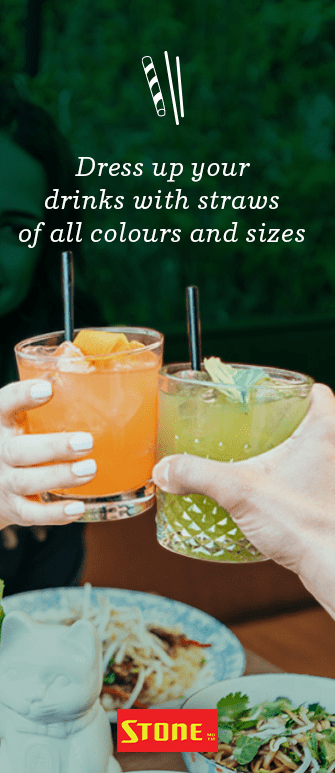Consistency in the guest experience is a winning factor for successful restaurant brands. From menu execution, service levels, to ways the staff are presented, guests return to restaurants where their experience consistently meets their expectations.
Traditionally, restaurants enforced staff uniforms such as matching pants, shirts and branded aprons, as a way to provide consistency in their teams’ visual appearance and the restaurant brand experience. Lately, though, the idea of the traditional uniform has evolved as more restaurant brands encourage staff to express their individuality, while following brand guidelines.
The “non-uniform” uniform concept can be tricky to navigate. How important is a uniform to your overall restaurant brand? VERY, and here’s why!
Customer experience is becoming the new competitive brand advantage, and what’s eye opening is that 80% of companies believe they deliver “super experiences,” but only 8% of customers agree. Everything a restaurant brand does, including how the team is presented, influences the overall customer experience, according to Forbes.com.
A uniformed team look provides regularity in your staff’s appearance, helping diners identify who actually works for the establishment from other patrons. Being able to easily pinpoint staff is important to the overall guest experience. Some restaurant brands go one step further to have a defined or elevated management dress code, to clearly define for guests who is in charge!
A uniformed team look provides regularity in your staff’s appearance, helping diners identify who actually works for the establishment from other patrons.
Here is a harsh truth about restaurant guests: they are judging your front-of-house staff on their appearance and how it relates to the service level of your operation. For this reason, fine dining restaurants traditionally impose a strict uniform standard, where each staff member is identically dressed in a polished manner, reflective of the refined dining experience. This is what guests have come to expect in this category of restaurants, so it is important to factor in how your team’s attire represents your restaurant’s level of service.
- TIP: Align your attire to your brand
Uniforms also support the overall brand experience, so even if you are developing a “non-uniform” uniform, ensure that your attire guidelines align with the restaurant’s vibe and atmosphere. If you are operating a fun casual pub, then your staff’s attire should match that.
North Winds, a craft brewer and casual eatery, has taken this approach and gives their staff freedom to choose what they wear on the bottom in terms of pants, shorts, skirt and footwear, but provides them with a North Winds shirt that is mandatory from Saturday to Thursday. On Fridays, however, the staff are encouraged to wear a shirt from another craft brewer to support the industry while letting the team showcase their beer interests and personal style.
So how do you design and regulate the “non-uniform” uniform?
- TIP: Create a dress code for your restaurant brand and your staff
Most importantly, maintain your brand image, because your staff’s appearance should never hinder your restaurant’s reputation. Begin by defining and upholding a clear dress code standard that emphasizes professionalism and cleanliness, while supporting a “non-uniform” diverse concept. Your guests will appreciate this and it sends a strong signal to your staff that your restaurant brand and how customers perceive it, is important to the business’ overall success.
Seasonal weather shifts, the flow of service, plate and tray sizes, tableside experiences, ordering standards, and restaurant design will impact what your team can wear to comfortably and safely perform their duties. Reference workplace safety laws to ensure your standards align with best practices.
Regulating your staff’s unconventional uniform can sometimes lead to uncomfortable chats. To avoid misinterpretation, provide examples of what is acceptable and what is not, and how your team can vary their work style while maintaining brand consistency. Jenny Companion, VP of Eastern Operations at The Fifteen Group, recommends providing retailer suggestions and picture examples of looks that match the attire standards.

Gusto101 in Toronto designed the ideal “non-uniform” uniform that maintains the overall brand image and feel. Gusto’s wait staff and bartenders dress in blue denim shirts, or a blue branded t-shirt, and jeans, but the brand choices and style choices are all theirs. Guests are still able to identify who works at Gusto, employees can be comfortable in their own clothing that fits their shape and style, and the restaurant saves on uniform costs; it’s a win-win!
“Going with the ‘non-uniform’ uniform for your restaurant can be a fun way to express staff individuality while maintaining your brand,” says Gusto owner and chef Janet Zuccarini, “but it is still important to understand the rules around who covers the cost of the uniform, even if it isn’t head to toe.”
Be sure to read up on Canada’s latest Employment Acts that outline this useful information.



